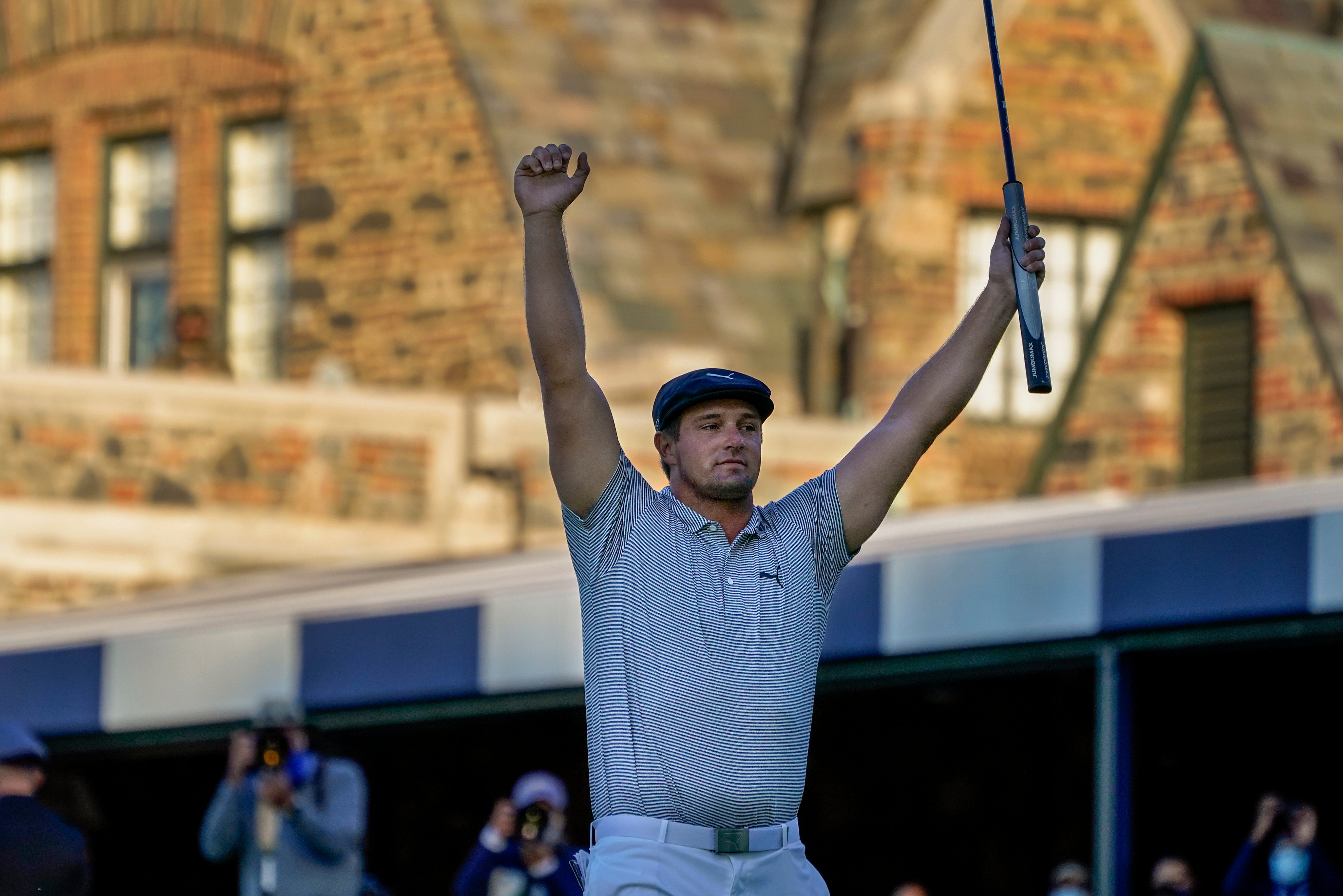Column: US Open more about modern athlete than modern game
The way Bryson DeChambeau overwhelmed Winged Foot is to wonder how Augusta National can contain him

The power grabbed everyone's attention, tee shots launched so far that it reduced a big golf course into what seemed like a pitch and putt. Thoughts quickly turned to the next major, and how his length would play at Augusta National.
This was in 1991 after John Daly won the PGA Championship at Crooked Stick.
He tied for 19th in the Masters.
The comparison is not that simple, of course. Bryson DeChambeau the U.S. Open champion, is not the only player in today's game who can hit it a country mile. His six-shot victory was as much a result of a stellar short game.
It also helped that Winged Foot allows approach shots on all but a couple of the holes to run onto the green. The “bomb and gouge” style doesn't work so well on U.S. Open greens when the ball can arrive only by air.
Golf shouldn't be concerned that DeChambeau swung for the fences and more times than not found the rough. That was his plan at the start of the week, and he followed it all the way until he closed with a 3-under 67, the first U.S. Open champion since 1955 to have the only score under par in the final round. DeChambeau was that good.
The setup allowed for that strategy.
DeChambeau used an extreme example. He reasoned that if there were no fairways at all, only rough, it would make sense to hit tee shots as far as possible. Narrow fairways meant they would be hard to hit, anyway, so why not go deep? Even from the rough, as long as there was angle to the pin, wedges could bounce their way onto the green.
True, he hit only 41% of his fairways (23 out of 56). Then again, only 25 players did better. According to the golf research group “15th Club,” players at Winged Foot hit the fairway 39.6% of the time, the lowest percentage for a U.S. Open since such data started being tracked more than 30 years ago.
More telling is that DeChambeau tied for fifth in hitting greens in regulation, and he was third in scrambling. He posted the lowest score — 6-under 274 — ever recorded for a U.S. Open at Winged Foot. But he was the only player under par, just like Tiger Woods when he won at Pebble Beach by 15 shots and Bethpage Black by three.
Power never hurts. It's been that way forever. The lengths to which DeChambeau went — not just with his drives, but in building his body and swing — is what makes him stand out.
“And I'm not going to stop,” he said Sunday night. “Next week I'm going to be trying a 48-inch driver. We're going to be messing with some head designs and do some amazing things with Cobra to make it feasible to hit these drives maybe 360, 370, maybe even farther. I don't know.”
This is the modern game, and it takes some adjustment. Rory McIlroy a few years ago spoke to evolution in sport when he said the first memories of golf is how someone always wants it to be, whether that was watching Jack Nicklaus or Lee Trevino, Tom Watson or Seve Ballesteros.
“In 20 years' time, the next generation will be saying the same thing about us,” McIlroy said in 2017.
But even he wasn't sure what to make of what DeChambeau did at what appeared to be a traditional U.S. Open to everyone except the guy holding the trophy.
“Whether that’s good or bad for the game, I don’t know,” McIlroy said. “It’s not the way I saw this golf course being played or this tournament being played.”
More than the modern game, it's the modern player.
DeChambeau was asked what the USGA would say if it huddled for a debriefing on the morning after. “He's hitting it forever,” he replied with a laugh.
But he turned serious when the topic changed to how the USGA would react. The governing bodies are equipped with research that shows distance increasing too much for their tastes, and the focus is on equipment.
“It's tough to rein in athleticism,” DeChambeau said. “We're always going to be trying to get fitter, stronger, more athletic. Tiger inspired this whole generation to do this, and we're going to keep going after it. I don't think it's going to stop. Will they rein it back? I'm sure.”
Will it matter?
The USGA and R&A, in their “Joint Statement of Principles” from 2002, said further big increases in distance would be undesirable, whether that came from equipment, athleticism, better coaching or golf course conditions. The focus was on equipment. In some corners, athleticism was dismissed.
It shouldn't be. Not anymore.
The golf ball really hasn't changed that dramatically since then, no matter what the marketing slogans say. The drivers are improving. Phones are grossly underrated in terms of getting instant video to perfect swings. DeChambeau mentioned shafts being so good they can withstand swing speeds approaching 130 mph.
“We're constantly trying to just hit it as hard as we possibly can,” he said.
His inspiration comes not from Nicklaus, Watson and Woods, but long drive specialists like Kyle Berkshire and Justin James.
“They are the ones breaking the barriers," DeChambeau said. "I can see what is possible. So that inspires me to keep pushing the limits.”